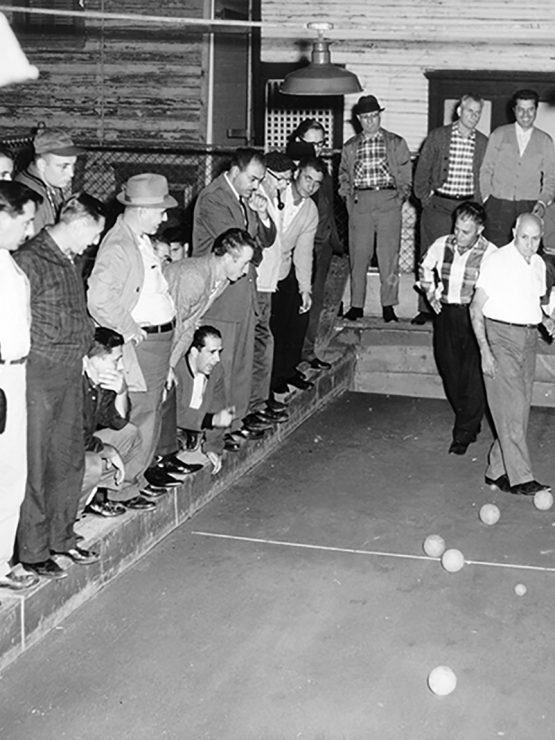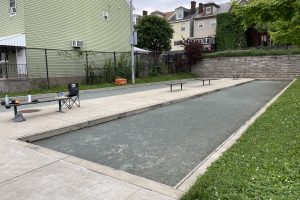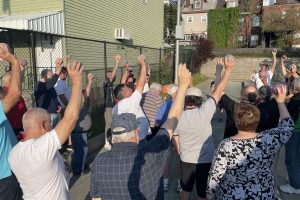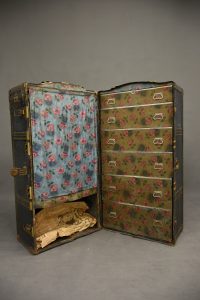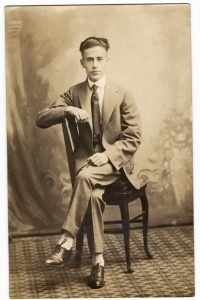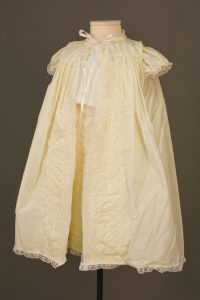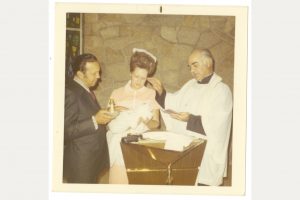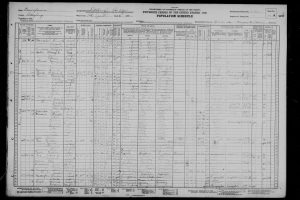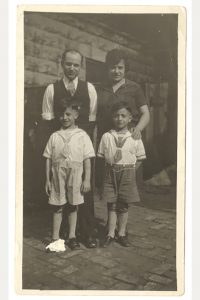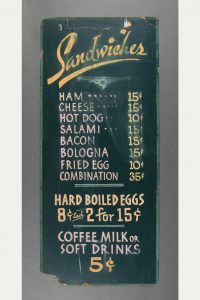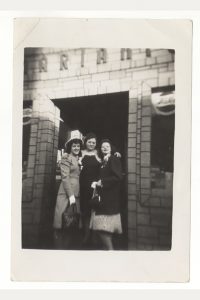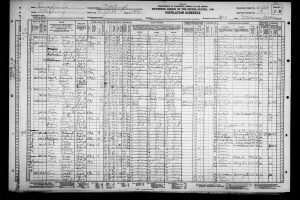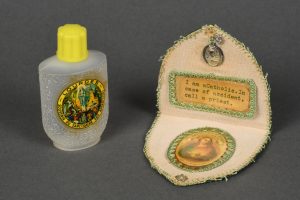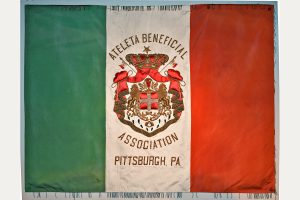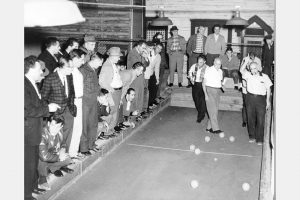Oral history is an important part of the work of the Italian American Program. In the History Center’s Detre Library & Archives, there are more than 400 oral histories with first, second, and third generation Italian Americans from Western Pa. These audio interviews capture stories of lived experiences, documenting details about people, places, and events, and provide essential context for understanding and interpretating the museum’s object collections. For more than 30 years, with the help of many individuals, the Italian American Program has dedicated much time and effort to preserving these one-of-a-kind recordings, adding new accounts to the collection each year.
In 2022, Dr. Alisa Balestra emailed me with an idea. We were both involved with an Italian American women’s organization and had similar backgrounds as researchers interested in public history. It was over the neighborhood of Bloomfield that we connected. Balestra had an ancestral relationship to the place – her mother’s paternal grandparents, French/German immigrants from Alsace Lorraine, lived in the neighborhood in the 1870s – approximately a decade before Italian immigrants moved in. Bloomfield may be branded as Little Italy today, but it once was a predominately German neighborhood in the mid-19th century.
Balestra once lived in Bloomfield, finding comfort residing among other Italian Americans. She wrote, “I was drawn to Bloomfield because of my own paternal grandparent – an Italian immigrant to the United States. I attended Italian festivals, and my father shipped me Illy espresso when I left Youngstown and could no longer find it where I was living. I was a peppers and egg sandwich for breakfast kind of kid. Living in Bloomfield, I took pride in supporting Donatelli’s and the other Italian businesses in the neighborhood. When Donatelli’s closed in 2022 after 90 years, I felt sadness.”
Balestra suggested we collect new oral histories. The Detre Library & Archives had a handful of interviews from Bloomfield Italian Americans – Joseph Bruno, Frank Donatelli, Pasqualino Lombardozzi, Jack Sciullo, Janet Cercone Scullion – but it was worth collecting new interviews, especially with Italian American women and post-World War II migrants, to understand the significance of the neighborhood to its Italian American residents.
Oreste Mariani
We began visiting the bocce courts under the Bloomfield Bridge, getting to know the people who played bocce weekly and cared for the courts, many of whom lived nearby. One of those individuals we met was Oreste Mariani Sr., the youngest of nine siblings – Elisabetta, Umberto, Guglielmo, Eugenio, Ottorino, Flora, Milena, and Iola, who they called Viola. He was the only born in the United States, which earned him the nickname “All American.” Mariani, known as “Orrie” to his friends, was interviewed at the History Center in the summer of 2022. Over several hours, he told us the story of his life in Bloomfield – playing bocce on courts behind his home as a child, recounting a loving marriage with his high school sweetheart, raising four children, and working as an Engineering Technician at Westinghouse repairing nuclear reactors.
Mariani recalled, “My mother was in Bloomfield for 50 years, and never learned to speak English because she didn’t have to.”
Both before and after World War II, most stores on Liberty Avenue were “run by Italians,” priests said mass in Italian, and the neighborhood had several Italian social clubs. Mutual aid organizations for Italian immigrants from the villages of Ateleta, Castel Del Sangro, and Castel del Giudice were active during Mariani’s youth. He remembered Bloomfield in the 1930s:
“I was born with a midwife [in 1929]. Not in the hospital. It was behind the Sure Save. Or Foodland, at one time. They had a double duplex back there, and it was occupied by four Italian families. And the yard in the back went across both of them. And, as would be normal, they put a bocce court back there between our families. My oldest brother, and his wife and daughter, lived on the first floor. We lived on the second and third floor, on one half. The other half was two other Italian families from Italy. Not even from our town… I think they were from towns close to ours, but not our town. And every night in the summer after dinner, they’d go out and play bocce at the court that went across both buildings.”
His family emigrated from the village of San Pietro, located in the mountainous region of Abruzzo. Italian immigrants living in Bloomfield came predominately from Abruzzo – villages such as Pescocostanzo, Roccacinquemiglia, Rivisondoli, Palena, Sulmona, Forli del Sannio – but the community was not exclusively Abruzzese.
Elda Tambellini
Another life-long Bloomfield resident we interviewed in 2022 was Elda Tambellini, born in Pittsburgh in 1930 to parents Paolo Tambellini and Rose Gianni, from the village of Sant’Alessio near the town of Lucca in Tuscany. The day of our interview, Tambellini received Communion as a homebound Catholic; she described her family’s life as devout Catholics in Bloomfield:
“It used to be the Immaculate Conception and then they changed it to Maria Goretti, and now it’s closed altogether. And my brother [Francis] was an altar boy. And my sister [Natalie] and I, we volunteered to clean the church, even afterwards. All three of us went to Immaculate Conception school. And at the time [in the 1930s], when my sister and my brother went there, it was prefabricated, each little room. Two classes were in a room. And then after that, they tore it down and they built a nice school, and I went there.”
Francis Tambellini was ordained as a Catholic priest in 1950 and eventually became a Monsignor with the Diocese of Greensburg, serving the church until his death in 1990. Natalie and Elda stayed in the Tambellini home in Bloomfield and worked downtown, Natalie at Consolidated Gas and Elda at Gimbel’s. The three siblings often traveled to Europe with their parents to visit sacred Catholic sites, such as St. Peter’s Cathedral at the Vatican and the Grotto of Massabielle in Lourdes.
Tambellini also described living in a neighborhood with mainly Southern Italians, recalling,
“There were only about two or three Tuscans in Bloomfield, so we weren’t members of [their group]. They stuck together and we [Northern Italians] weren’t one of them.”
Despite regional differences that impacted socialization, this didn’t prevent the Italian residents of Bloomfield from using the neighborhood’s resources, the many businesses, spaces, and facilities run or attended by fellow Italians Americans. Mariani and Tambellini were both congregants of Immaculate Conception Catholic Church, students at Immaculate Conception School, and members of the church choir. There are other object and archival collections at the History Center documenting Italian immigrants (and their American-born relatives) living in Bloomfield that were not from the region of Abruzzo – the Mongiovi family from Santa Elisabetta in the Agrigento province of Sicily, the Ruberto family from Cairano in the Avellino province of Campania, and the Butera family from Platì and San Nicola in the Reggio Calabria province of Calabria.
A Little Italy in Transition
Sadly, Mariani and Tambellini, both in their 90s, passed within a year of each other. As they reminisced about their lives in Bloomfield, they acknowledged the neighborhood had changed over their lifetimes.
Mariani said Little Italy was “on the downgrade now… there’s not that many Italians left… I grew up thinking there were two nationalities in the whole world. Italians and Americans. No matter what you were, if you weren’t Italian, you were Americano.” Tambellini noted, “It seems like the Italians are gone. I guess they got money, I don’t know, and they moved out to the suburbs… I know a couple of people that lived in Penn Hills, out [in the] South Hills, Mount Lebanon.”
Indeed, in the last decade, Italian American-owned small businesses such as Del’s Ristorante, Donatelli’s Groceria, and Golden Razor barbershop closed, among other changes to establishments that anchored the Italian American community.
While it’s true that the Bloomfield of Mariani and Tambellini’s youth is no more, the neighborhood will always hold a significant place in Pittsburgh’s Italian American history. It’s a community that experienced nearly continuous Italian migration for close to 100 years. It offered a downtown-adjacent location where one could live, work, and worship in similar ways as they did in Italy and enjoy the opportunities available to them in Pittsburgh. Bloomfield provided a sense of familiarity for Italian immigrants and, later, Italian Americans, just as it did for Balestra. Remnants of that history and culture are embedded throughout the neighborhood, including in the residents with living memories of the past century. We are grateful to Oreste Mariani Sr., Elda Tambellini, and others such as Oreste Mariani Jr., Michael Rinaldo, Mark and Linda Honath, the Monteleone siblings – Jack, Linda, and Ann, Antonella DiIanni, and John McIntosh, who shared their memories with the History Center so that future generations can hear (and read) the history of Little Italy from those who knew it best.
About the Authors
Melissa E. Marinaro is the Director of the History Center’s Italian American Program. Marinaro has worked with the Italian American Collection since 2013 and has added more than 50 new oral histories to the archives, preserving nearly 100 new community voices.
Dr. Alisa Balestra is now an Overbook resident and has lived in the Steel City since 2016. This is a passion project for Balestra, who in her professional life conducts economic development research as the Senior Director of Economic Development Research and Strategy for the Allegheny Conference on Community Development.

